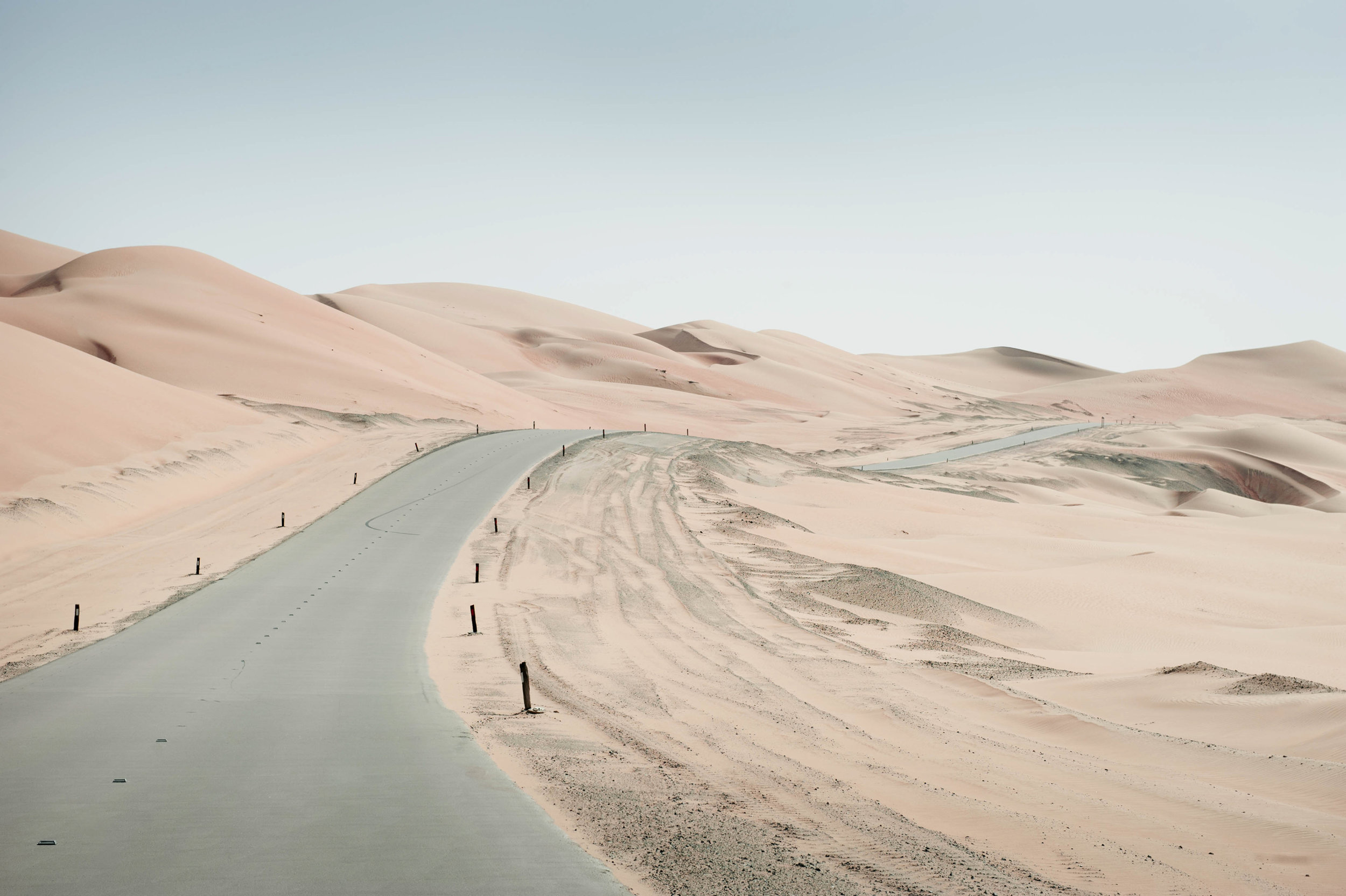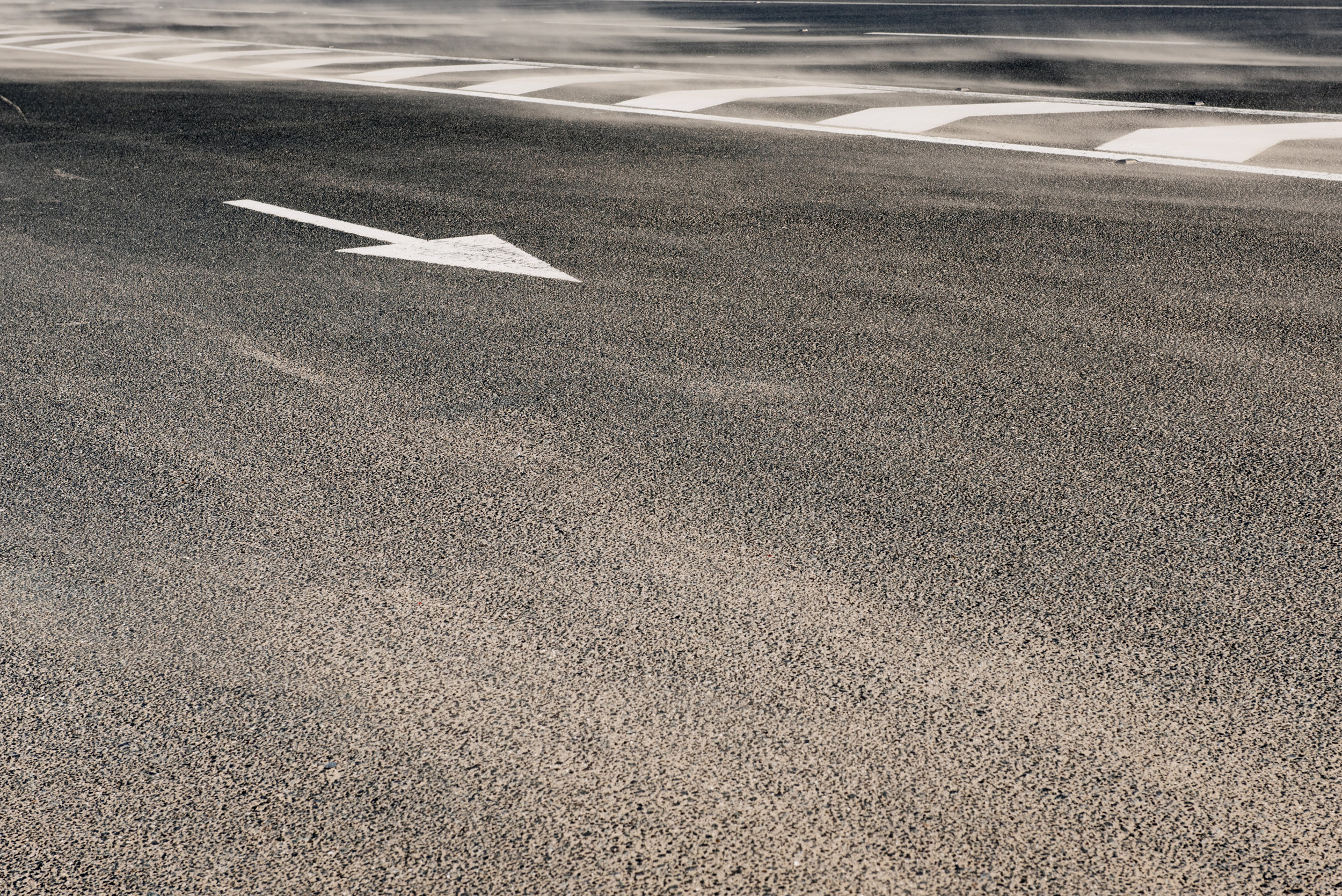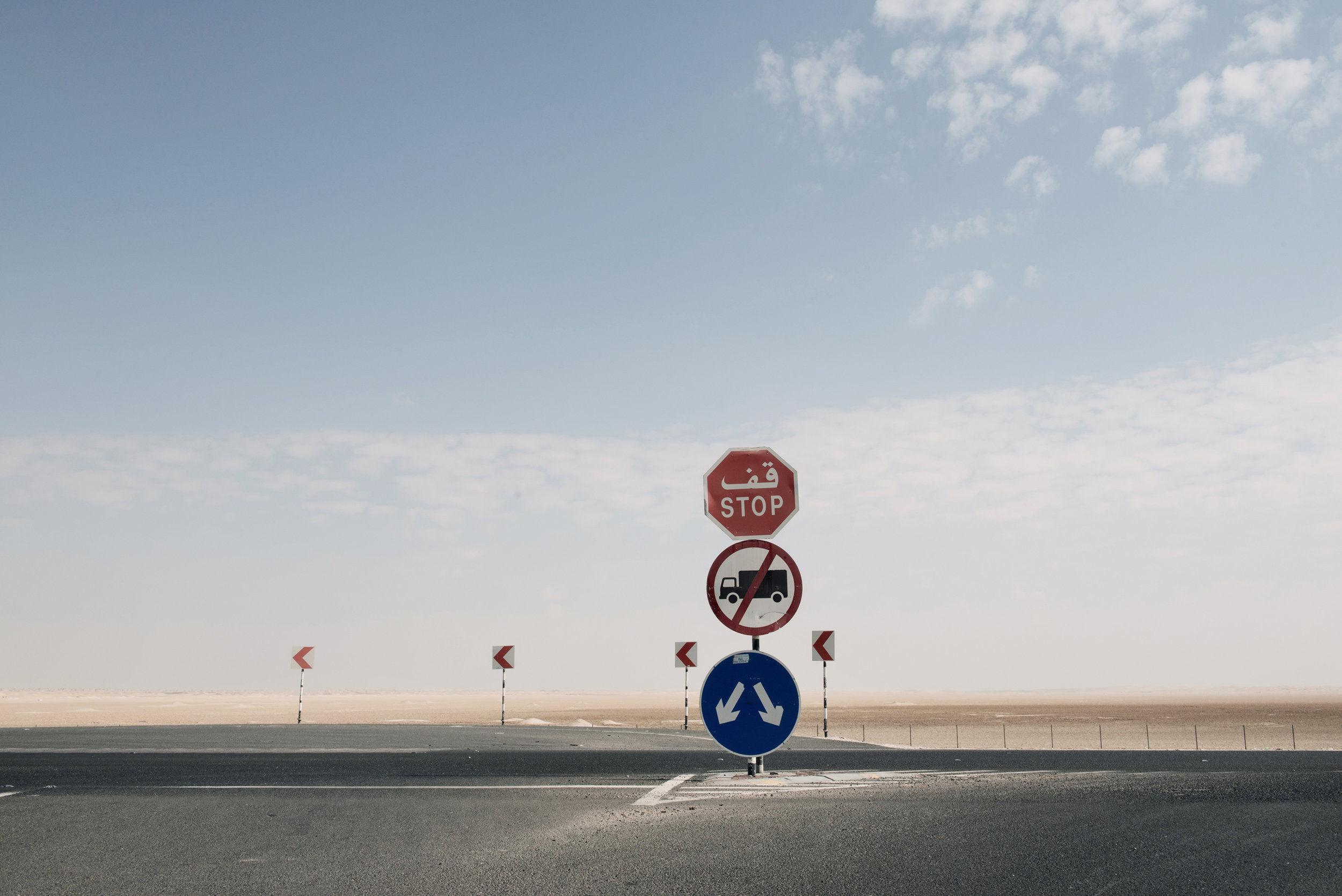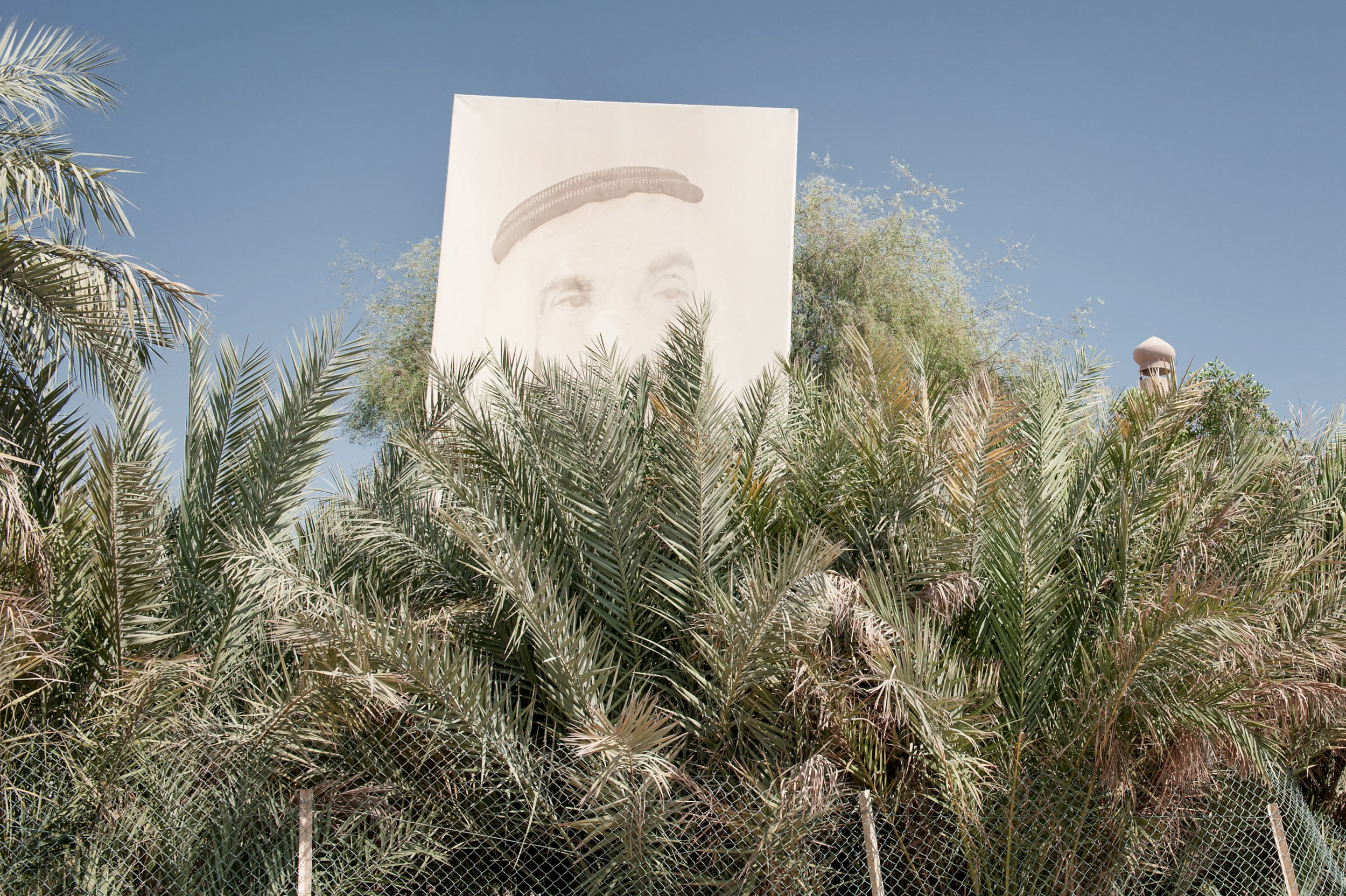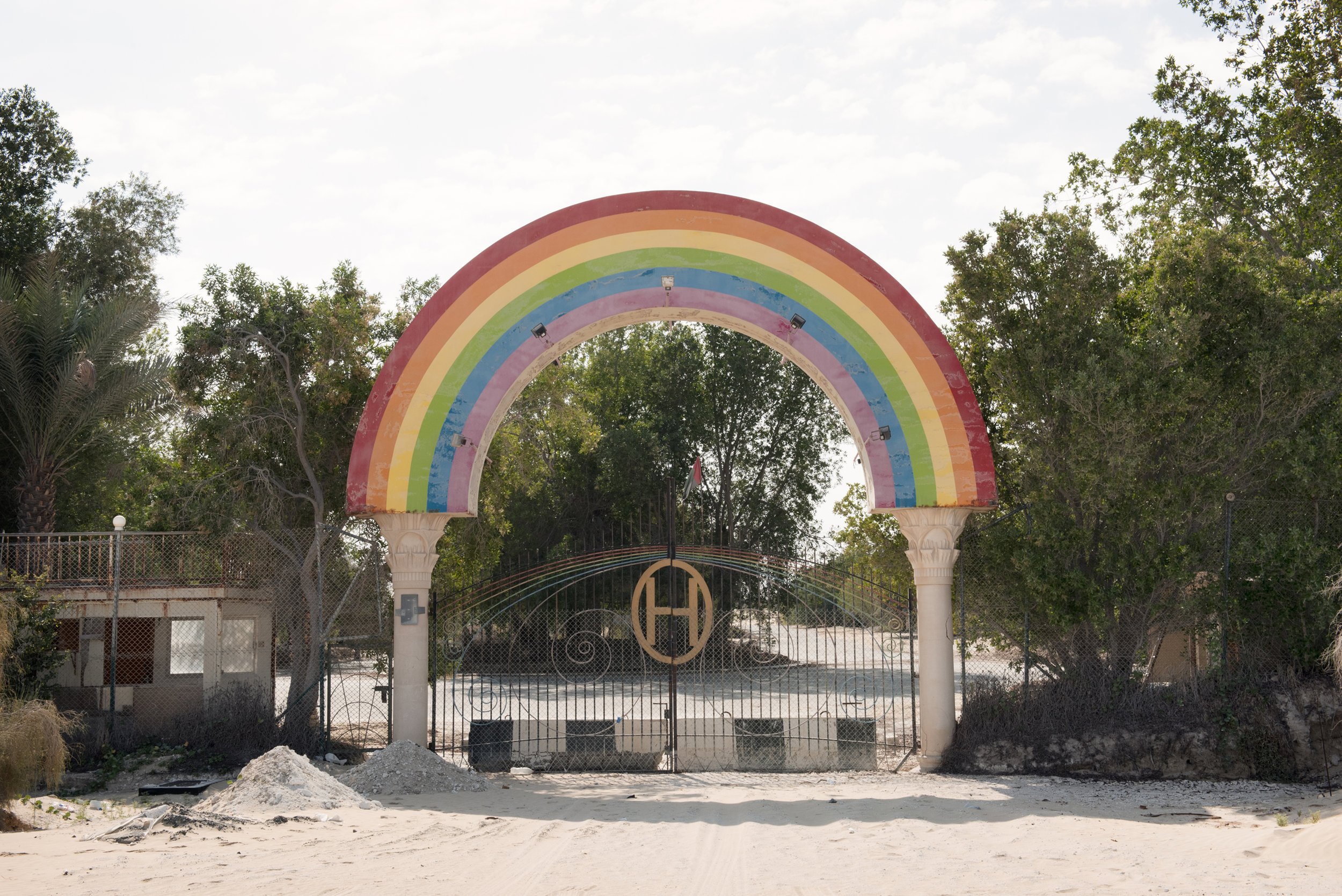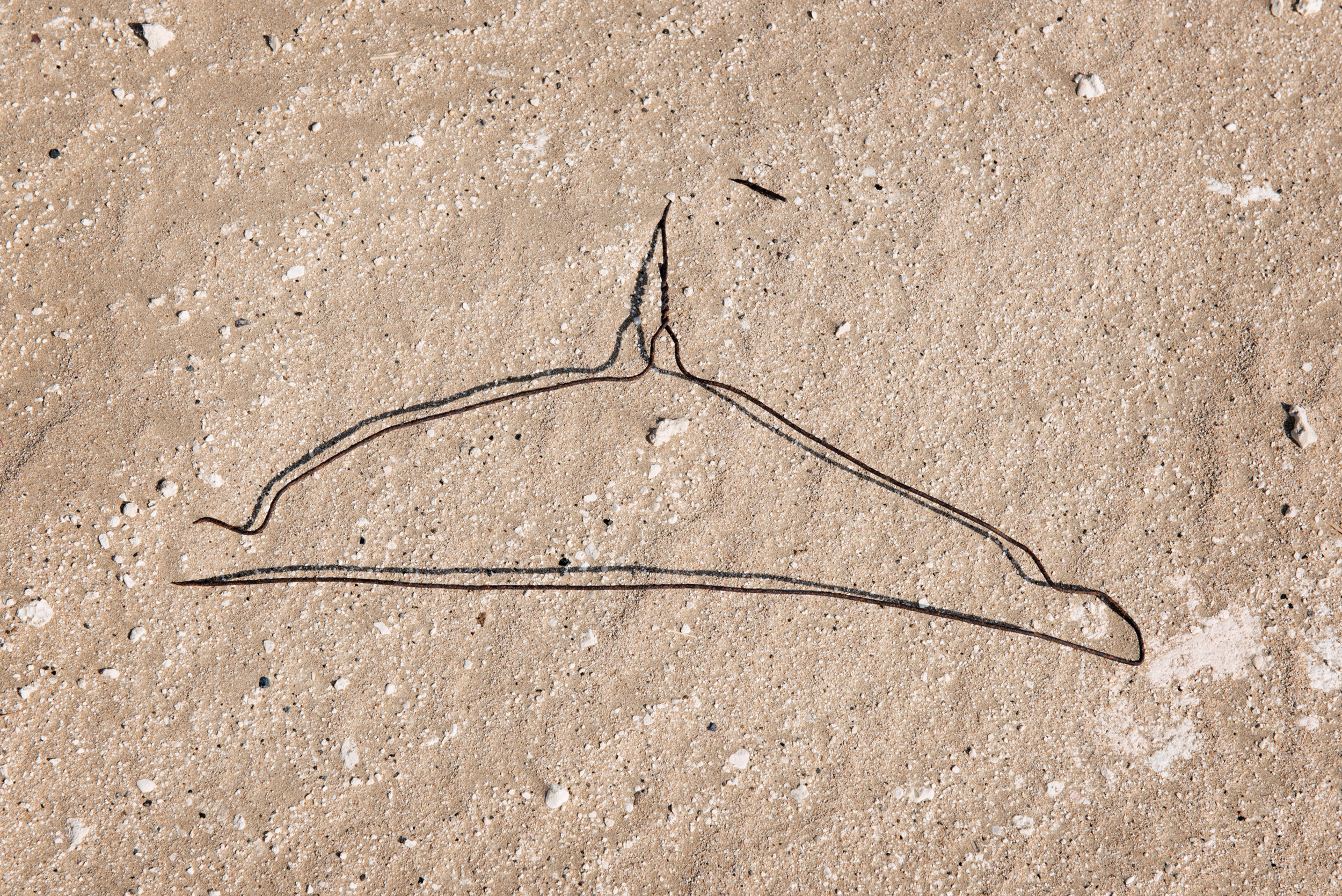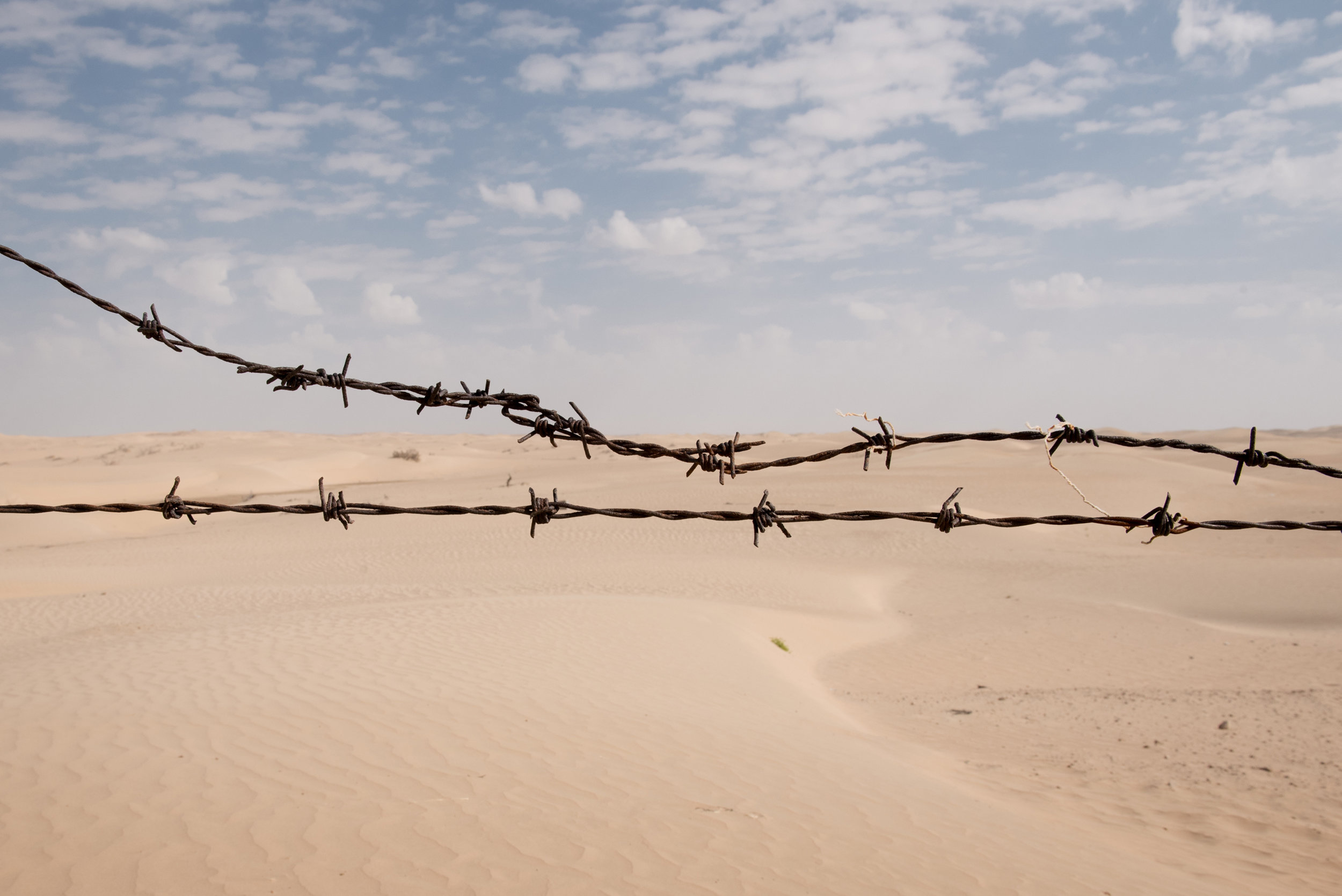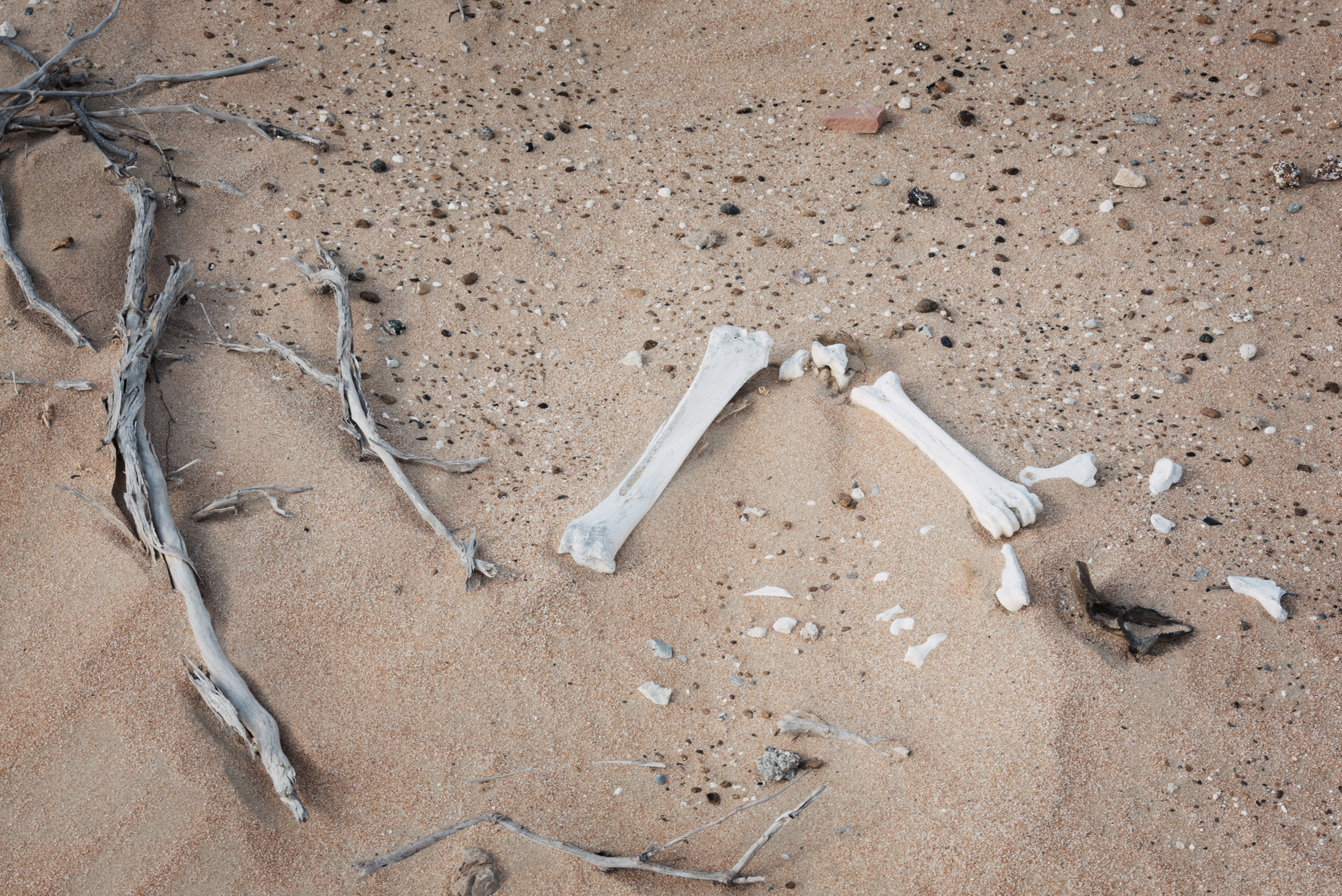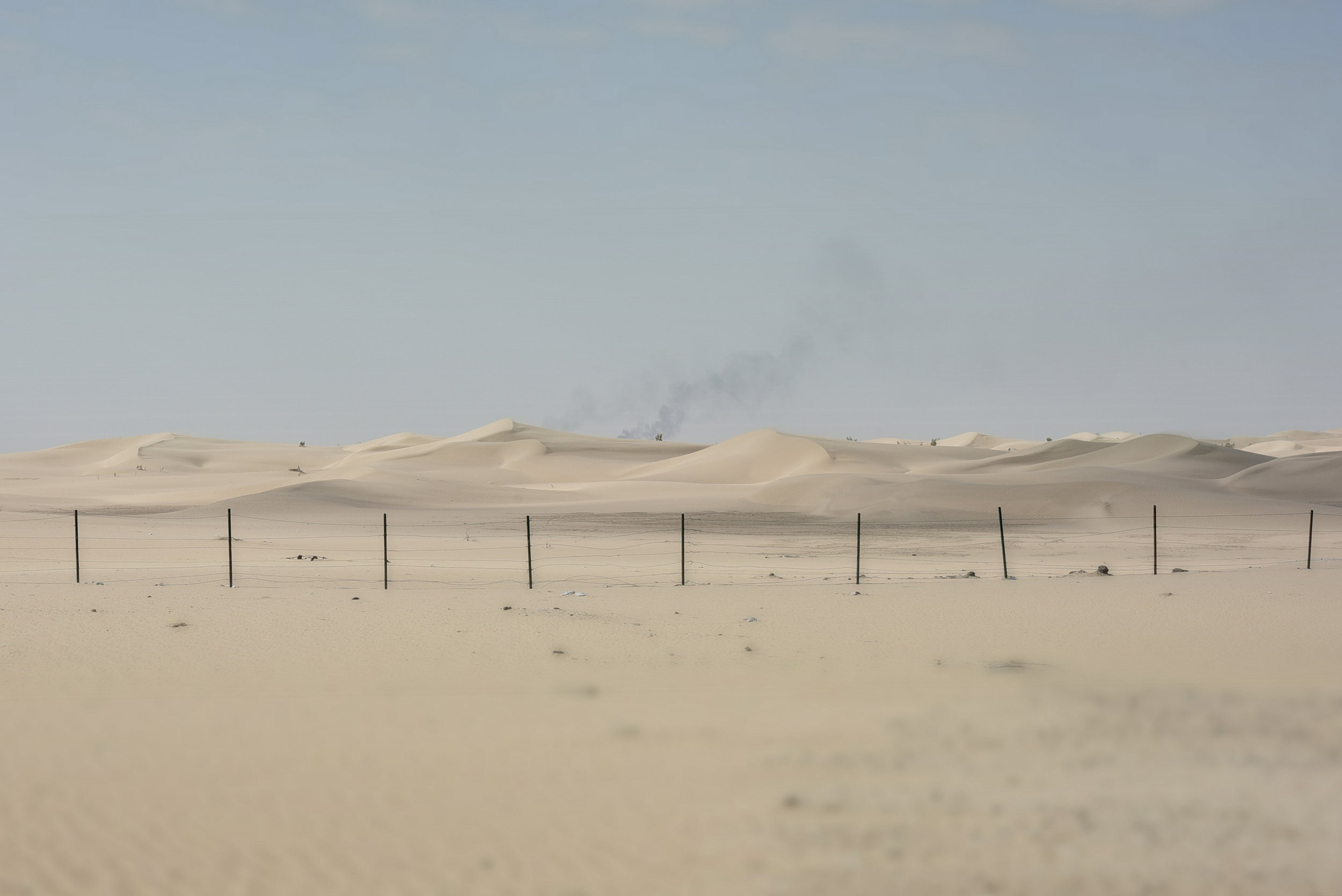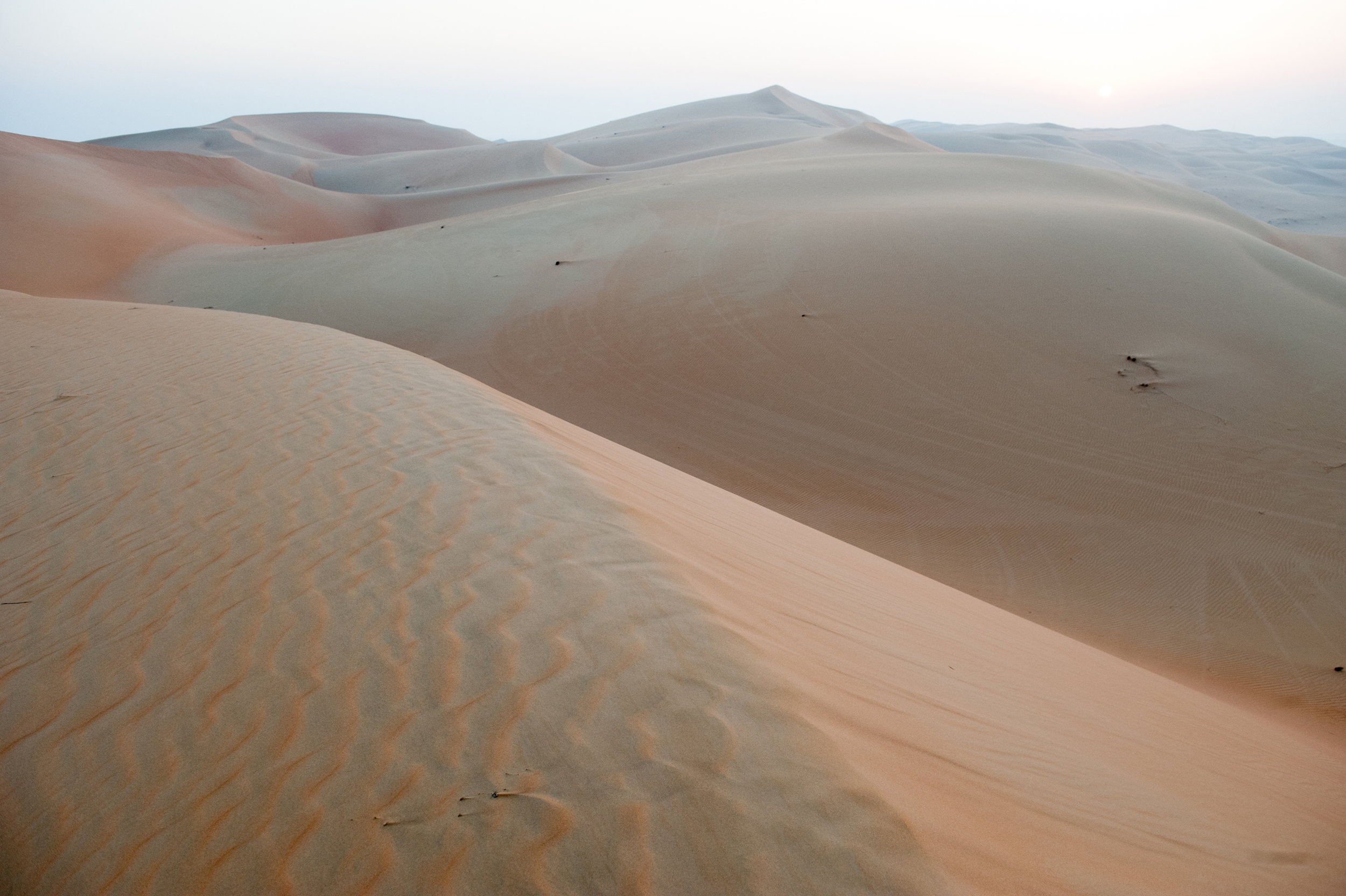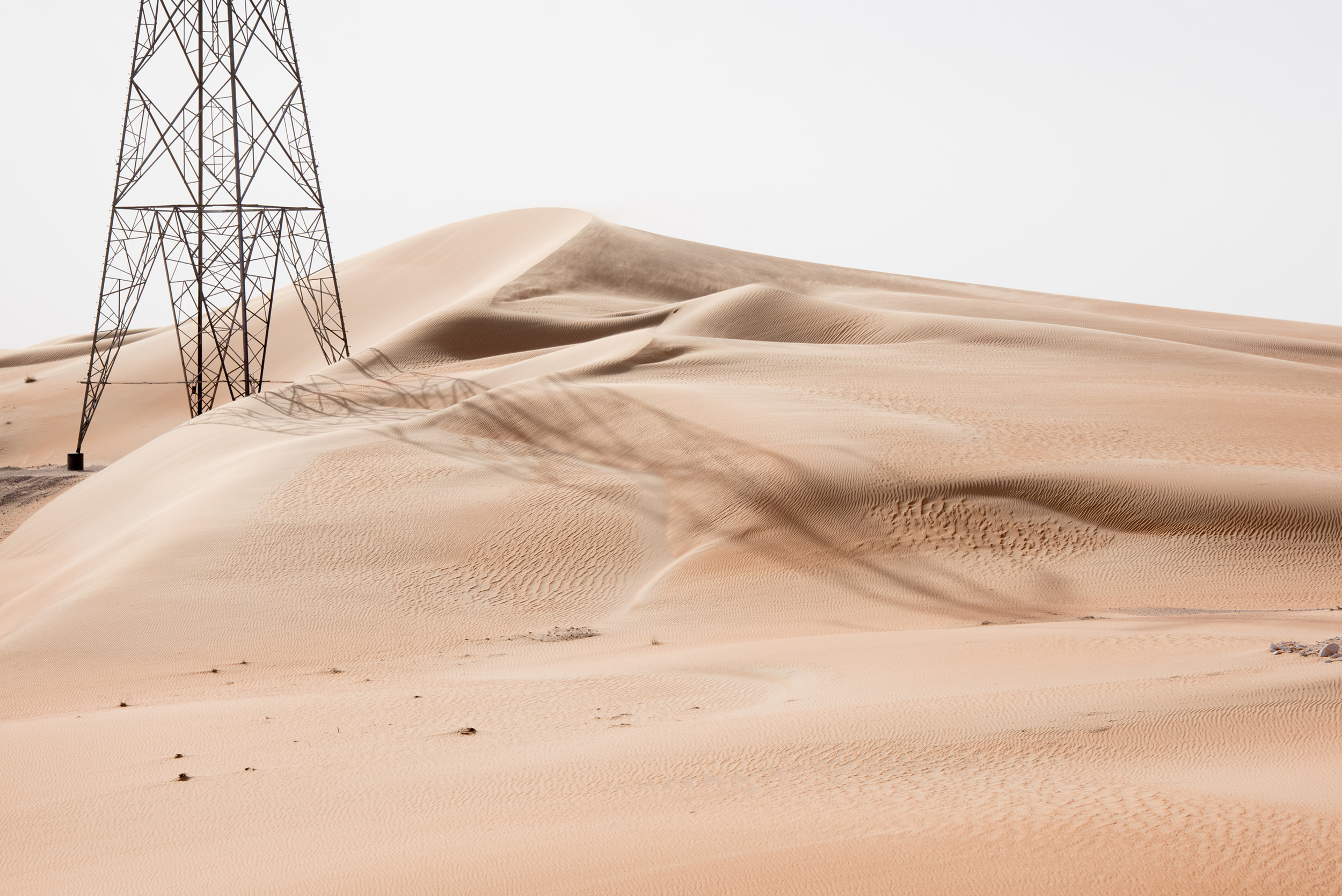Road to wilderness
The journey begins at the edges of the Abu Dhabi city's industrial sprawl, where the landscape has been laid to waste by the corridor development along the E11. As the main transport route linking Abu Dhabi to the oil and gas fields, and onwards towards Saudi Arabia, the sky is crocheted by pylons and electricity cables and beneath them surges a vast multilane highway, populated by trucks and tankers.
At Hameem, a flyover peels off to the start of the E65, a ramrod straight road stretching for 150 kilometers towards the beautiful but inhospitable Rub' al l<hali. Known also as the Empty Quarter, this is the largest, hottest, driest sand desert in the world, and covers 65,000 square miles across the Arabian Peninsula. The road is built at an elevation, keeping the shifting sands from settling, but once onto the verge, the vista has a habit of disappearing. The route affords only glimpses of a landscape scarred, then smudged with industry until it meets the edges of an ancient pristine desert, serving to heighten the sense of a journey which hides more than it reveals.
These whispers from the road suggest what lies beyond its boundaries, sometimes a smear of smoke from a distant gas flare, a camel farm. The empty landscape appears devoid of people, but traces found along the way hint at life and endeavor; the worker's glove, a water bottle, bleached bones. Further along the route, the desert takes hold, and begins to reclaim itself. Sand ripples form on tarmac, fences submerge beneath dunes, and dust swirls in the air.
